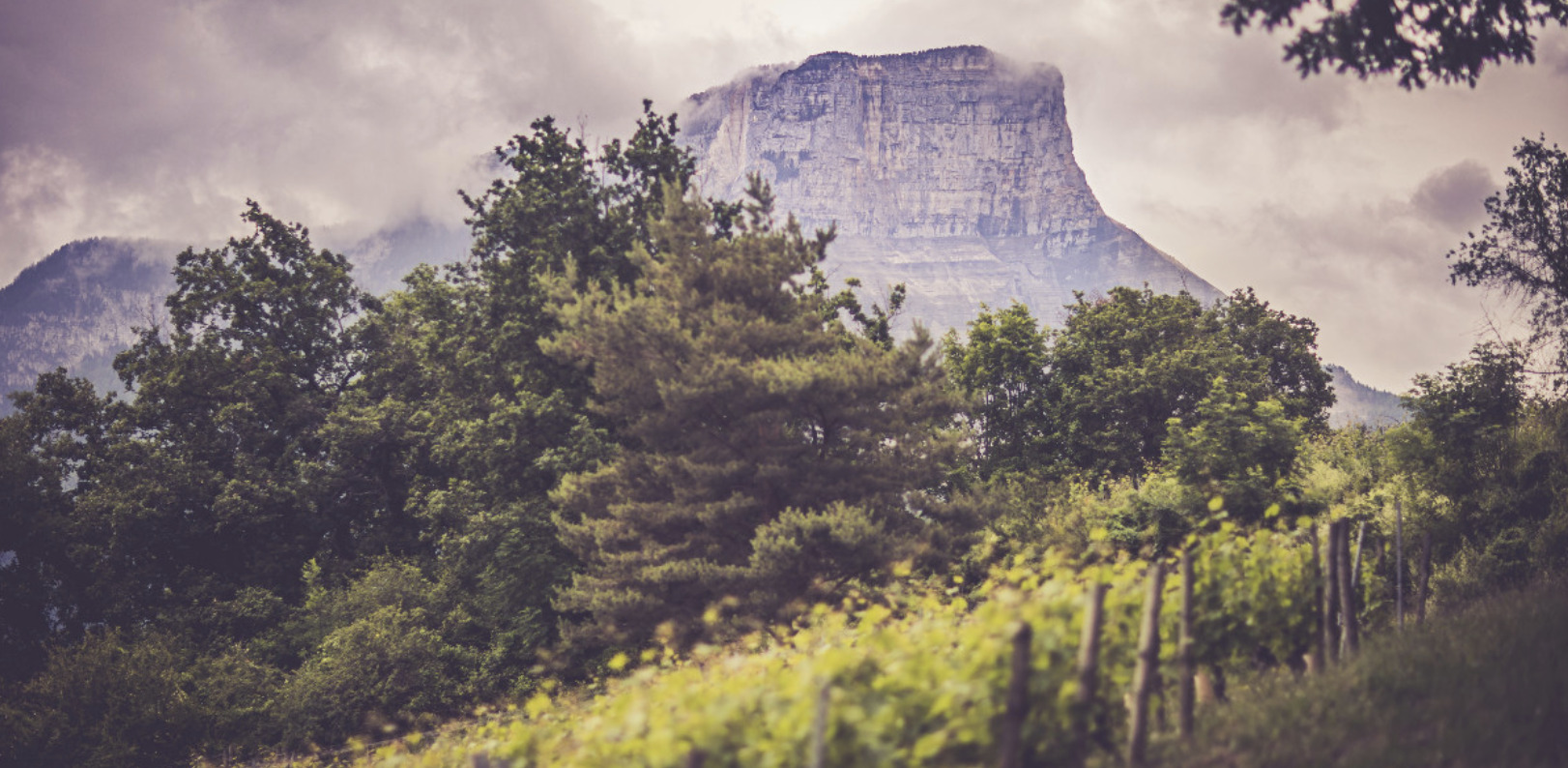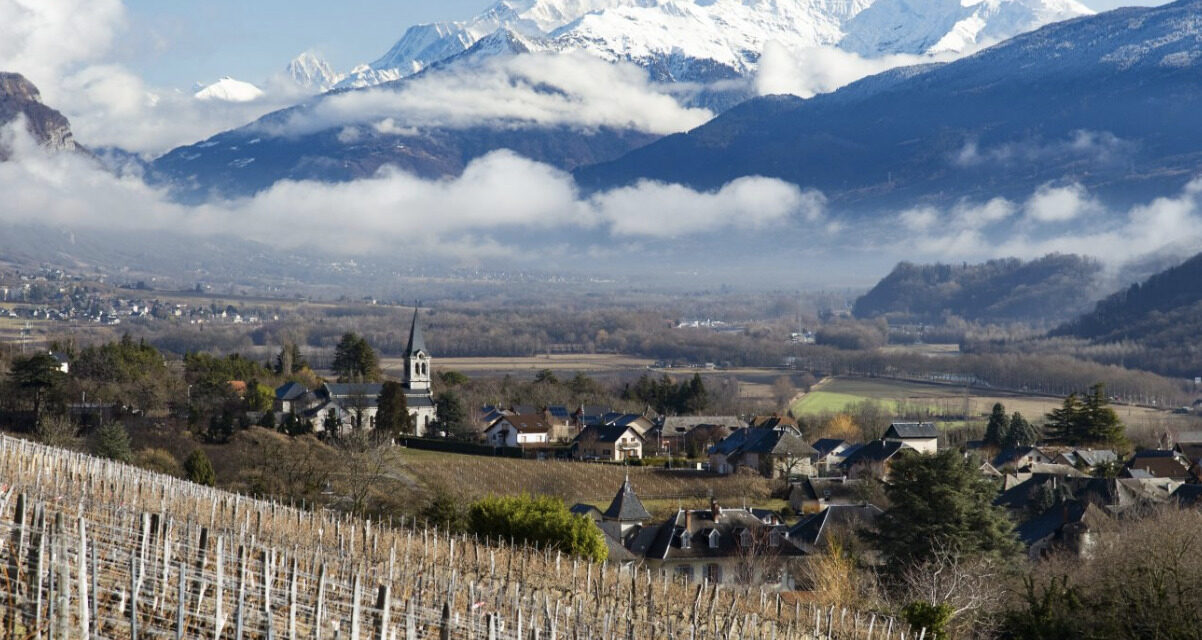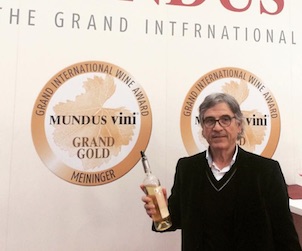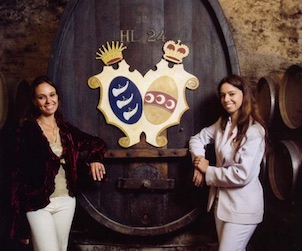After a recent intimate tasting in downtown Toronto (at SIPS Toronto) organised for Vins de Savoie by the wonderful Liz Luzza of Luzza PR, I found myself in a bit of a quandary.
How best to describe the wines of the Savoie region?
Well, that’s a rather tricky question, as things can get complicated.
Located in the valleys between the French alps and the deep glacial lakes of the Auvergne-Rhône-Alpes region of southeastern France, the picturesque, mountainous Savoie (pronounced “Sav-wa”) produces some of the most enchanting wines one will find this side of ambrosia and nectar. These wines are intriguing in every which way.
If you are having trouble picturing where it is, imagine that Switzerland lies to the region’s east, Bugey is just over the Rhône River to the west, and Jura is to the north-northwest. It’s a tiny region of a mere 5,200 acres and is actually a little smaller than Napa’s Oakville AVA, which covers 5,700 acres.
Knowing this, it probably won’t surprise you to learn that it is responsible for a mere 0.55% of all French AOP production, with 95% of the wine never leaving the region, and indeed, this may be one of the reasons the wines have remained reasonably undiscovered except to those who have chosen to travel there for their vacations or holidays, what with the area being a significant tourist draw.
Up until recently, the majority of wine drinkers dismissed these wines as being only suitable for some après-ski frivolities.
How very wrong they were.
As wine fashions have morphed over the decades, the wines of Savoie are now more relevant than ever, appealing to those looking for nuanced wines with myriad delicacies of form and flavour. Exports to countries with evolving wine cultures have been steadily increasing over the last decade or so.
Although they are (currently!) not quite as easily found in Ontario as they are in Quebec, if you look hard enough, you’ll find some in the wine programs of the more adventurous of establishments.
In Part Two of this article I’ll be speaking with some of the winemakers and their thoughts on the wines of the region, a number of them coming through our Good Food Fighters.

The greater majority (70%) of production is white, with over 50% of that being made from the Jacquère grape. Saying that, the vineyards of Savoie are home to a thrillingly diverse palette of grapes, with 25 recognised varieties having been identified, many of them unique to the region.
Speaking of diversity, the vineyards are scattered throughout four main areas (more on that later), with many soil types creating a veritable patchwork of unique terroirs. Most vineyards are planted upon limestone-rich glacial scree, but one will also find moraines, alluvial soils, river terraces (riverstone over clay), and molasse (sandstone, shale, and conglomerate formed in front of rising mountain chains).
Despite being a mountainous region with an average altitude of 1,500m above sea level and 36 peaks over 3,500m, the majority of vineyards are planted between 250m and 450m, with some exceptional mountain slope vineyards sitting at 550m.
Although vines are planted at considerable elevation, they are surprisingly warmer than one would imagine, due to the aforementioned sun exposure and the moderating effects of rivers and lakes of the region. In the winter, snow often protects the grapes from freezing, but spring frosts can be a perennial headache for the Savoie grape grower.
The climate is decidedly continental, with most sites being planted south- or southeast-facing in order to maximise exposure to the sun and protect the vines from the colder winds blowing from the north. Saying that, some spots are subject to alpine and Mediterranean influences.
The four main growing areas consist of Savoie (located in the south-southeastern part of the region, where the vast majority of vines are planted), Haut-Savoie (in the north of the region), Isère (a small area to the southwest), and finally Ain (a tiny parcel of 200 acres in the northwest).
Across these subregions, one will find the four AOP: Vin de Savoie/Savoie, Roussette de Savoie, Seyssel, and the newly minted Crémant de Savoie.
- Vin de Savoie AOP, or simply Savoie AOP, (Est. 1973) can be made in all four of the growing areas, with 17 specific geographical designations (read: Village designations) allowed on the label. These are primarily for white wines but also for red and rosé.
- Roussette de Savoie AOP (Est. 1973) is reserved for wines made exclusively from the local Altesse variety. There are four vineyard or “Cru” designations here, namely Frangy, Monterminod, Marestal, and Monthoux.
- Seyssel AOP (Est. 1942) is the most established of the AOPs and covers dry white and sparkling wines primarily produced from Altesse and Molette. Three towns are covered by this designation: Seyssel, Corbonod, and Seyssel.
- Crémant de Savoie AOP (Est. 2014) is certainly the new kid on the block, with many producers trying their hand at this style. Rules cover hand-harvesting, traditional method vinification, and 12 months ageing before release. Wines should include at least 60 native grapes, with a minimum of 40% Jacquère. The rest can be made up of Chasselas, Aligoté, and/or Chardonnay. 20% of red varieties are also permitted.
So that’s Part One of your 101 on the beguiling wines of this inspiring region.
Look out for Part 2 in the next couple of weeks, where we take a look at the many grapes of the region and examine a few of the wines themselves, as well as getting a few words of wisdom from some Savoie producers who were in town the other week.







